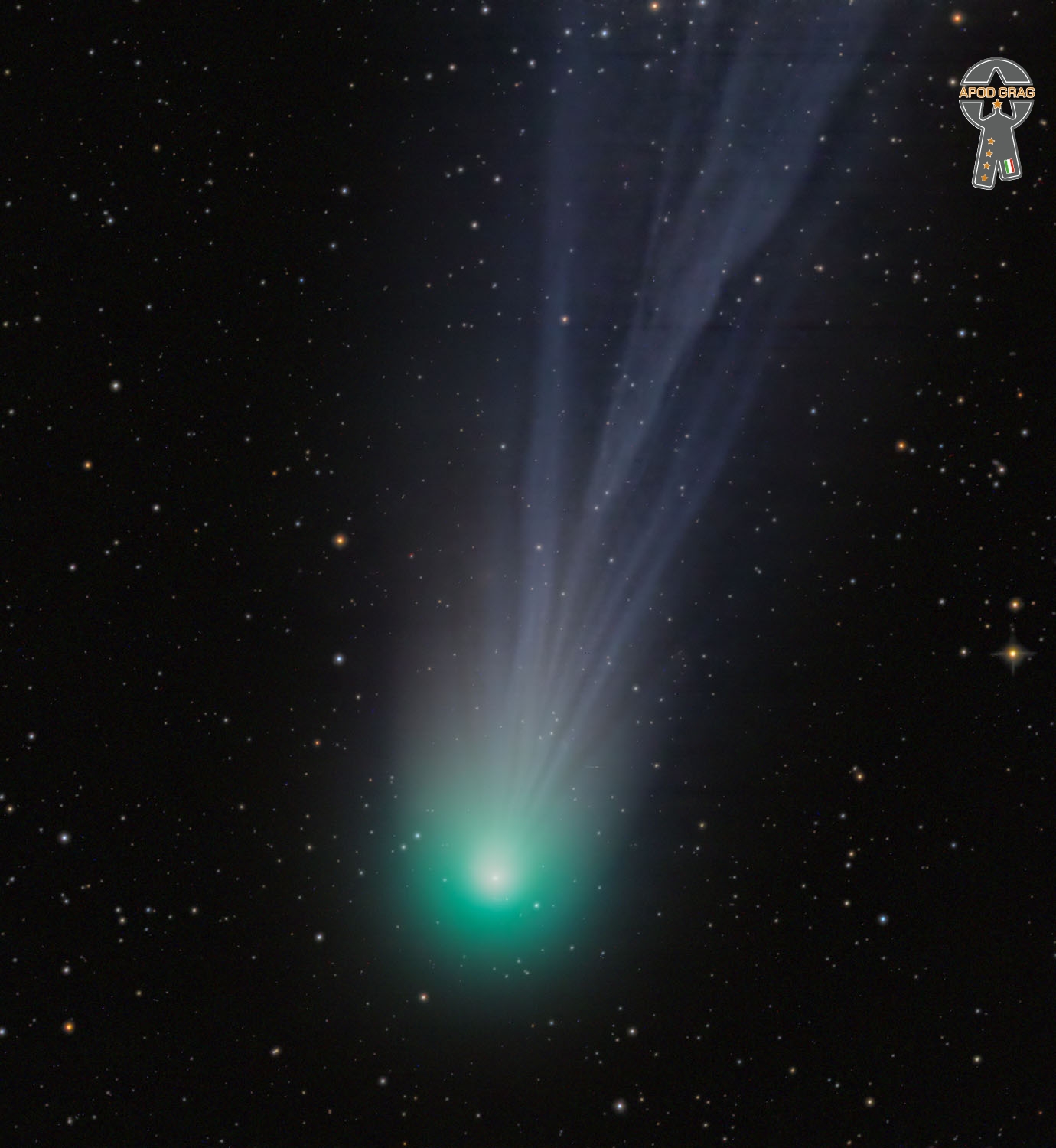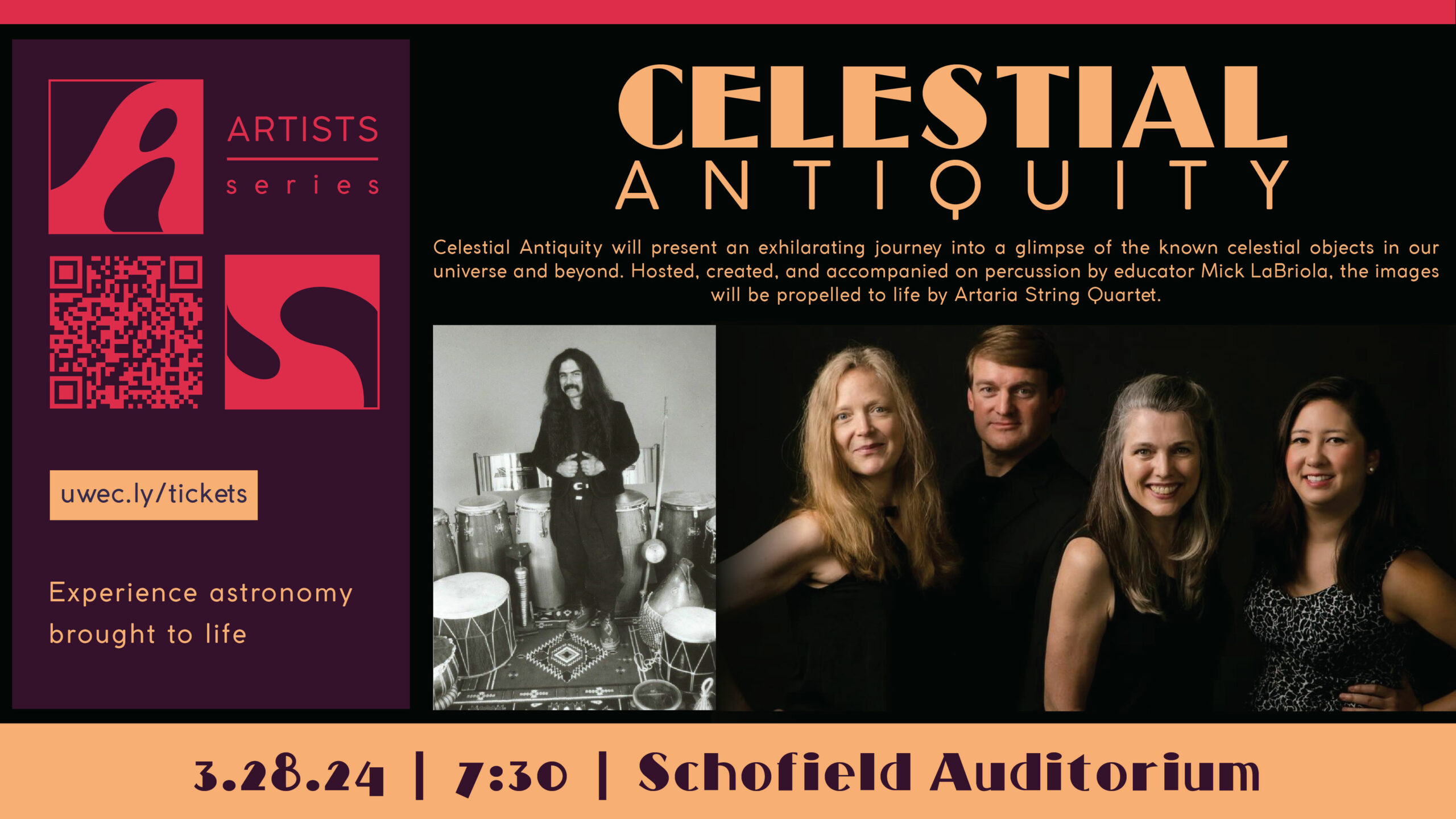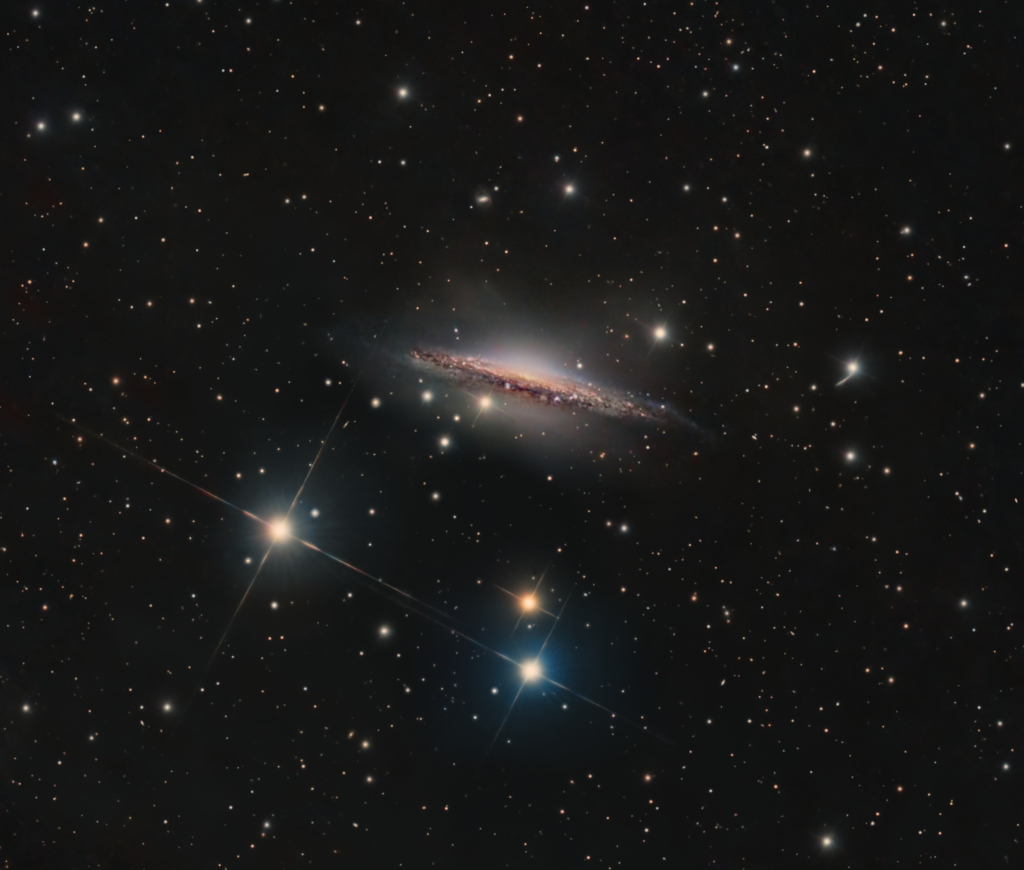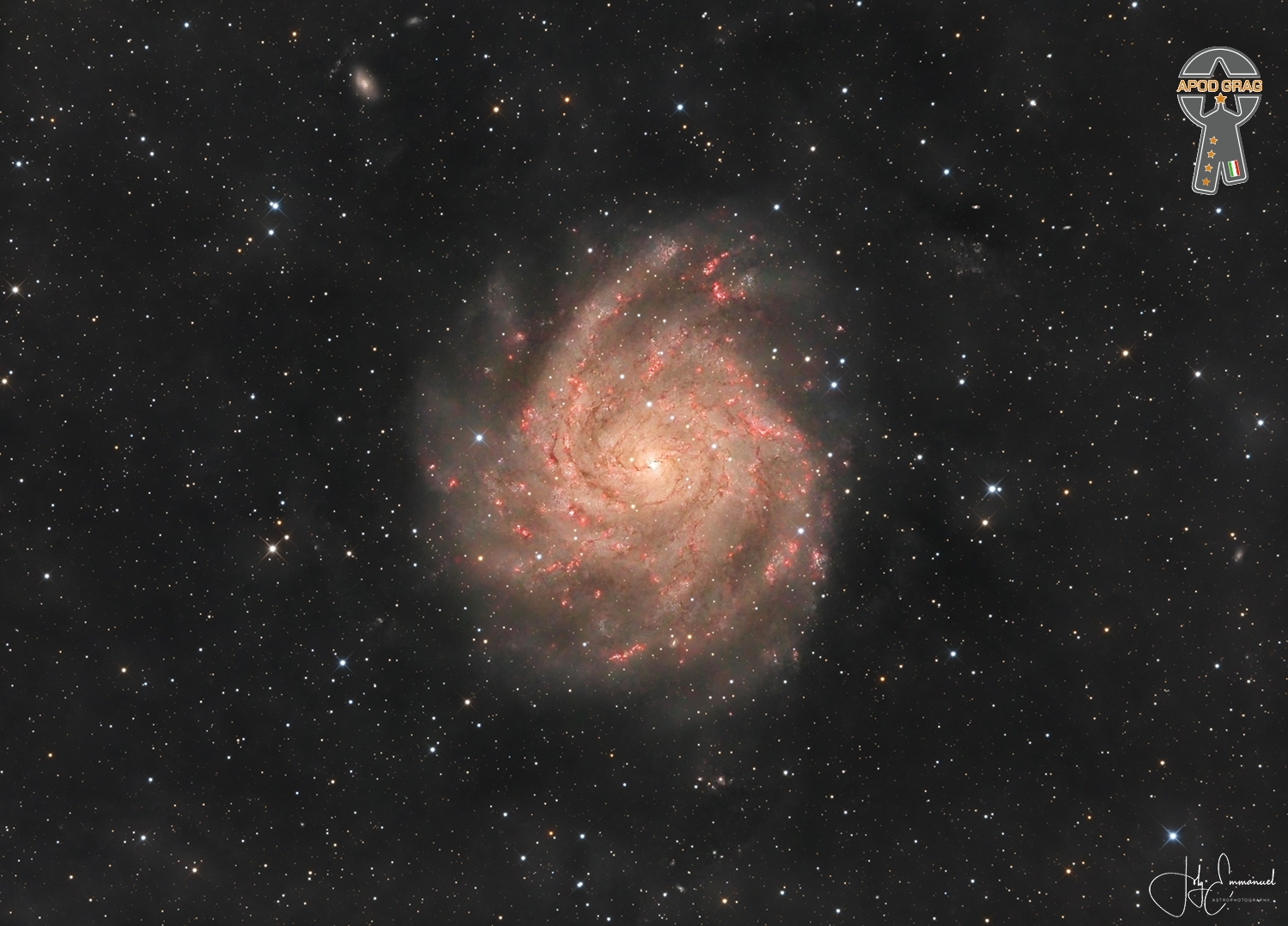Blog
12P/Pons–Brooks is a periodic comet with an orbital period of 71 years. Comets with an orbital period of 20 to 200 years are referred to as Halley-type comets. It is one of the brightest known periodic comets, reaching an absolute visual magnitude of about 5 in its approach to perihelion. Comet Pons-Brooks was definitely discovered at Marseilles Observatory in July 1812 by Jean-Louis Pons, and on its next appearance in 1883 by William Robert Brooks. There are ancient records of comets that may have been 12P/Pons–Brooks.
The next perihelion passage is 21 April 2024, with closest approach to Earth being 1.55 AU(232 million km) on 2 June 2024. The comet is expected to brighten to about apparent magnitude4.5. The comet nucleus is estimated to be around 30 km in diameter assuming it was not producing too much dust and gas during the 2020 photometry.
12P/Pons–Brooks may be the parent body of the weak December κ-Draconids meteor shower that is active from about November 29 to December 13.

more...
Ramzan Paskayev (Chechen: Рамзан Паскаев) (born March 16, 1947 in Taraz, Kazakhstan) is a Chechen accordionist and folk musician. He is regarded by many as the contemporary successor to late Chechen accordionist Umar Dimayev.
Paskayev was born in Taraz to Chechen parents on March 16, 1947. His family been sent to Kazakhstanas a result of the forced deportations of the Chechens and Ingush to Central Asia on February 23, 1944. Ramzan’s father Sultan worked as a truck driver and gathered wheat on a collective farm to help support his family. Sultan had managed to bring a German accordion from his home in Chechnya, and during evenings the young Ramzan would constantly bother his father to play the accordion out of curiosity.
more...Jerry Jeff Walker (born Ronald Clyde Crosby; March 16, 1942 – October 23, 2020) was an American country and folk singer-songwriter. He was a leading figure in the progressive country and outlaw countrymusic movement. He was best known for having written the 1968 song “Mr. Bojangles“.
Walker was born Ronald Clyde Crosby in Oneonta, New York, on March 16, 1942. His father, Mel, worked as a sports referee and bartender; his mother, Alma (Conrow), was a housewife. His maternal grandparents played for square dances in the Oneonta area – his grandmother, Jessie Conrow, playing piano, while his grandfather played fiddle. During the late 1950s, Crosby was a member of a local Oneonta teen band called The Tones.
more...Thomas Lee Flanagan (March 16, 1930 – November 16, 2001) was an American jazz pianist and composer. He grew up in Detroit, initially influenced by such pianists as Art Tatum, Teddy Wilson, and Nat King Cole, and then by bebop musicians. Within months of moving to New York in 1956, he had recorded with Miles Davis and on Sonny Rollins‘ album Saxophone Colossus. Recordings under various leaders, including Giant Steps of John Coltrane, continued well into 1962, when he became vocalist Ella Fitzgerald‘s full-time accompanist. He worked with Fitzgerald for three years until 1965, and then in 1968 returned to be her pianist and musical director, this time for a decade.
After leaving Fitzgerald in 1978, Flanagan attracted praise for the elegance of his playing, which was principally in trio settings when under his own leadership. In his 45-year recording career, he recorded more than three dozen albums under his own name and more than 200 as a sideman. By the time of his death, he was one of the most widely admired jazz pianists and had influenced both his contemporaries and later generations of players.
Flanagan was born in Conant Gardens, Detroit, Michigan, on March 16, 1930. He was the youngest of six children – five boys and a girl. His parents were both originally from Georgia. His father, Johnson Sr, was a postman, and his mother, Ida Mae, worked in the garment industry.
more...mick has done it again and this time gone to the far reaches of the Universe. He has assembled an Astronomy program consisting of 12 Categories accompanied by 12 musical compositions performed by Artaria String Quartet in a one hour program. Hold on to your seats boys and girls this will be an excursion into oblivion!

Performing for Shabbat for the Soul at Mt Zion on Friday 3-15-24 630pm with Jennifer Strauss-Klein, Tami Morse, Renae Goldman, Adam Dorn, Neil Segal and mick laBriola.
more...NGC 1055 is a dominant member of a small galaxy group a mere 60 million light-years away toward the aquatically intimidating constellation Cetus. Seen edge-on, the island universe spans over 100,000 light-years, a little larger than our own Milky Way galaxy. The colorful, spiky stars decorating this cosmic portrait of NGC 1055 are in the foreground, well within the Milky Way. But the telltale pinkish star forming regions are scattered through winding dust lanes along the distant galaxy’s thin disk. With a smattering of even more distant background galaxies, the deep image also reveals a boxy halo that extends far above and below the central bulge and disk of NGC 1055. The halo itself is laced with faint, narrow structures, and could represent the mixed and spread out debris from a satellite galaxy disrupted by the larger spiral some 10 billion years ago.

Ryland Peter Cooder (born March 15, 1947 LA, CA) is an American musician, songwriter, film score composer, record producer, and writer. He is a multi-instrumentalist but is best known for his slide guitar work, his interest in traditional music, and his collaborations with traditional musicians from many countries.
Cooder’s solo work draws upon many genres. He has played with John Lee Hooker, Captain Beefheart, Taj Mahal, Gordon Lightfoot, Ali Farka Touré, Eric Clapton, The Rolling Stones, Van Morrison, Neil Young, Randy Newman, Linda Ronstadt, Vishwa Mohan Bhatt, David Lindley, The Chieftains, Warren Zevon, Manuel Galbán, The Doobie Brothers, and Carla Olson and The Textones (on record and film). He formed the band Little Village, and produced the album Buena Vista Social Club (1997), which became a worldwide hit; Wim Wenders directed the documentary film of the same name (1999), which was nominated for an Academy Award in 2000.
Cooder was ranked at No. 8 on Rolling Stone magazine’s 2003 list of “The 100 Greatest Guitarists of All Time”, while a 2010 list by Gibson Guitar Corporation placed him at No. 32. In 2011, he published a collection of short stories called Los Angeles Stories.
more...Charles Lloyd (born March 15, 1938 Memphis, TN) is an American jazz musician. Though he primarily plays tenor saxophone and flute, he has occasionally recorded on other reed instruments, including alto saxophoneand the Hungarian tárogató. Lloyd’s primary band since 2007 has been a quartet including pianist Jason Moran, acoustic bassist Reuben Rogers, and drummer Eric Harland.
more...Samuel John “Lightnin’” Hopkins (March 15, 1912 – January 30, 1982) was an American country bluessinger, songwriter, guitarist and occasional pianist from Centerville, Texas. In 2010, Rolling Stone magazine ranked him No. 71 on its list of the 100 greatest guitarists of all time.
The musicologist Robert “Mack” McCormick opined that Hopkins is “the embodiment of the jazz-and-poetry spirit, representing its ancient form in the single creator whose words and music are one act”. He influenced Townes Van Zandt, Hank Williams, Jr., and a generation of blues musicians like Stevie Ray Vaughan, whose Grammy winning song “Rude Mood” was directly inspired by the Texan’s song “Hopkins’ Sky Hop”.
more...Bertha “Chippie” Hill (March 15, 1905 – May 7, 1950), was an American blues and vaudeville singer and dancer, best known for her recordings with Louis Armstrong.
Hill was born in Charleston, South Carolina, one of sixteen children. The family moved to New York in 1915. She began her career as a dancer in Harlem and by 1919 was working with Ethel Waters. At age 14, during a stint at Leroy’s, a noted New York nightclub, Hill was nicknamed “Chippie” because of her youth.She also performed with Ma Rainey as part of the Rabbit Foot Minstrels. She later established her own song and dance act and toured on the TOBA circuit in the early 1920s.
more...The Sacromonte neighborhood achieved its maximum splendor during the 60s, where most of its population handled singing, dancing or instruments. The gypsy zambra from the Moorish zambra, arises as the fusion of three dances that represented a different moment during the same gypsy wedding: the cachucha, the fly and the alboreá.
Some of the characteristic elements of these dances were: it was danced with bare feet, at the top a white shirt tied below the chest and at the bottom a skirt with wide pleats and tied at the hip.
The history of the Gypsy Zambra stopped during the Inquisition of the 16th century, where it was banned as it was considered an unworthy dance. From the 19th century on, flamenco began to take on importance as a musical art, and the gypsies of Sacromonte always appeared reflected by the romantic writers.
The so-called romantic travelers imagined gypsies singing and dancing flamenco, and this image is so accentuated about them that they began to do these dances for tourists with flamenco dress. It was at this time that the Sacromonte caves became a symbol in Spanish culture.
more...The IC 342 galaxy is sometimes referred to as the “Hidden Galaxy” or the “Ghost Galaxy.” These names allude to the fact that, due to its proximity to the plane of the Milky Way, IC 342 is often challenging to observe in visible light because of obscuration caused by the dust and interstellar gas of our own galaxy. This “hideout” in the galactic plane makes its observation more challenging, hence the acquisition of these nicknames.
IC 342 is located at a distance of approximately 10 million light-years from Earth, making it a relatively close galaxy within the Local Group, a collection of galaxies to which our Milky Way belongs.
Discovered by the British astronomer William Frederick Denning in 1895, IC 342 is listed in the Index Catalogue (IC), a catalog of celestial objects compiled by the Danish astronomer Johan Dreyer, which complements the famous Charles Messier catalog.

Leslie Thompson Baxter (March 14, 1922 – January 15, 1996) was an American musician, composer and conductor. After working as an arranger and composer for swing bands, he developed his own style of easy listening music, known as exotica and scored over 250 radio, television and motion pictures numbers. Baxter studied piano at the Detroit Conservatory of Music before moving to Los Angeles for further studies at Pepperdine College. From 1943 on he played tenor and baritone saxophone for the Freddie Slack big band. Abandoning a concert career as a pianist, he turned to popular music as a singer. At the age of 23 he joined Mel Tormé‘s Mel-Tones, singing on Artie Shaw records such as “What Is This Thing Called Love?”
Baxter then turned to arranging and conducting for Capitol Records in 1950, and conducted the orchestra in two early Nat King Cole hits, “Mona Lisa” and “Too Young“. He also recorded Yma Sumac‘s first album: “Voice of the Xtabay”, which can be considered one of the first recordings of exotica. In 1951 he made the original recording of “Quiet Village” which years later became a hit for Martin Denny. In 1953 he scored his first movie, the sailing travelogue Tanga Tika.
more...Shirley Scott (March 14, 1934 – March 10, 2002) was an American jazz organist. Her music was noted for its mixture of bebop, blues and gospel elements. She was known by the nickname “Queen of the Organ”.
Scott was born in Philadelphia, Pennsylvania. Her father operated a jazz club in the basement of the family home and her brother played Saxophone. At the age of eight, Scott began piano lessons. After enrolling at Philadelphia High School for Girls, where she was awarded a scholarship, Scott switched to trumpet and played in the all-city schools band.
more...Quincy Delight Jones Jr. (born March 14, 1933 Chicago) is an American record producer, songwriter, composer, arranger, and film and television producer. His career spans over 70 years, with 28 Grammy Awards won out of 80 nominations, and a Grammy Legend Award in 1992.
Jones came to prominence in the 1950s as a jazz arranger and conductor before working on pop music and film scores. He moved easily between genres, producing pop hit records for Lesley Gore in the early 1960s (including “It’s My Party“) and serving as an arranger and conductor for several collaborations between the jazz artists Frank Sinatra and Count Basie. In 1968, Jones became the first African American to be nominated for an Academy Award for Best Original Song for “The Eyes of Love” from the film Banning. Jones was also nominated for an Academy Award for Best Original Score for his work on the 1967 film In Cold Blood, making him the first African American to be nominated twice in the same year. Jones produced three of the most successful albums by pop star Michael Jackson: Off the Wall (1979), Thriller (1982), and Bad (1987). In 1985, Jones produced and conducted the charity song “We Are the World“, which raised funds for victims of famine in Ethiopia.
In 1971, Jones became the first African American to be the musical director and conductor of the Academy Awards. In 1995, he was the first African American to receive the academy’s Jean Hersholt Humanitarian Award. He is tied with sound designer Willie D. Burton as the second most Oscar-nominated African American, with seven nominations each. In 2013, Jones was inducted into the Rock & Roll Hall of Fame as the winner, alongside Lou Adler, of the Ahmet Ertegun Award. He was named one of the most influential jazz musicians of the 20th century by Time.
more...More Posts
- The Cosmos with OH 231.8+04.2
- Duane Allman
- Meredith Monk
- Dr. John
- Flamenco Fridays with José Valencia
- Daily Roots with the Upsetters
- Surviving the Pandemic and Realizing Racial Justice
- The Cosmos with NGC 1015
- George Freeman
- Kenny Werner
- Joe Hunter
- Tommy Dorsey
- World Music with Lakha Khan
- Daily Roots with Robert Marley
- Surviving the Pandemic and Realizing Racial Justice
- The Cosmos with NGC 869/884
- Cindy Blackman
- Don Cherry
- Claude Williamson
- Compay Segundo